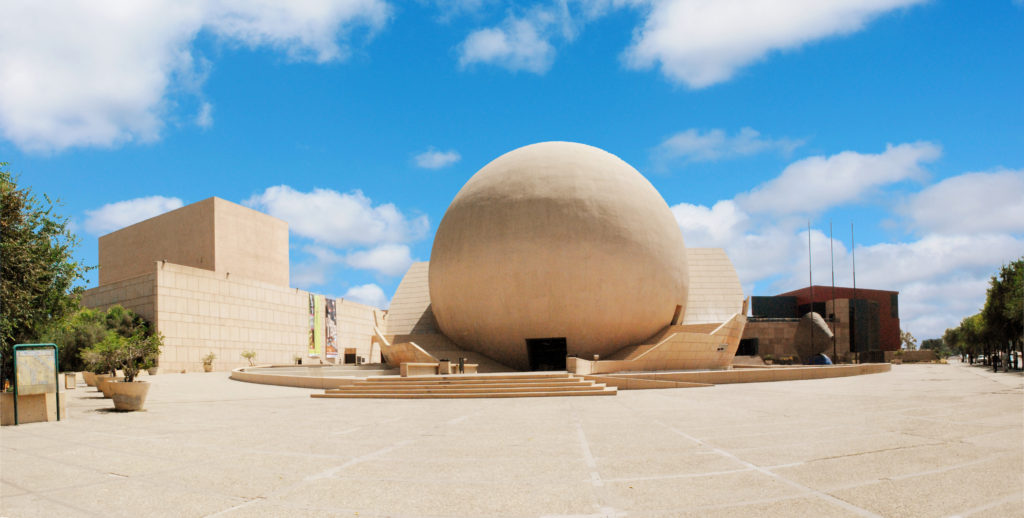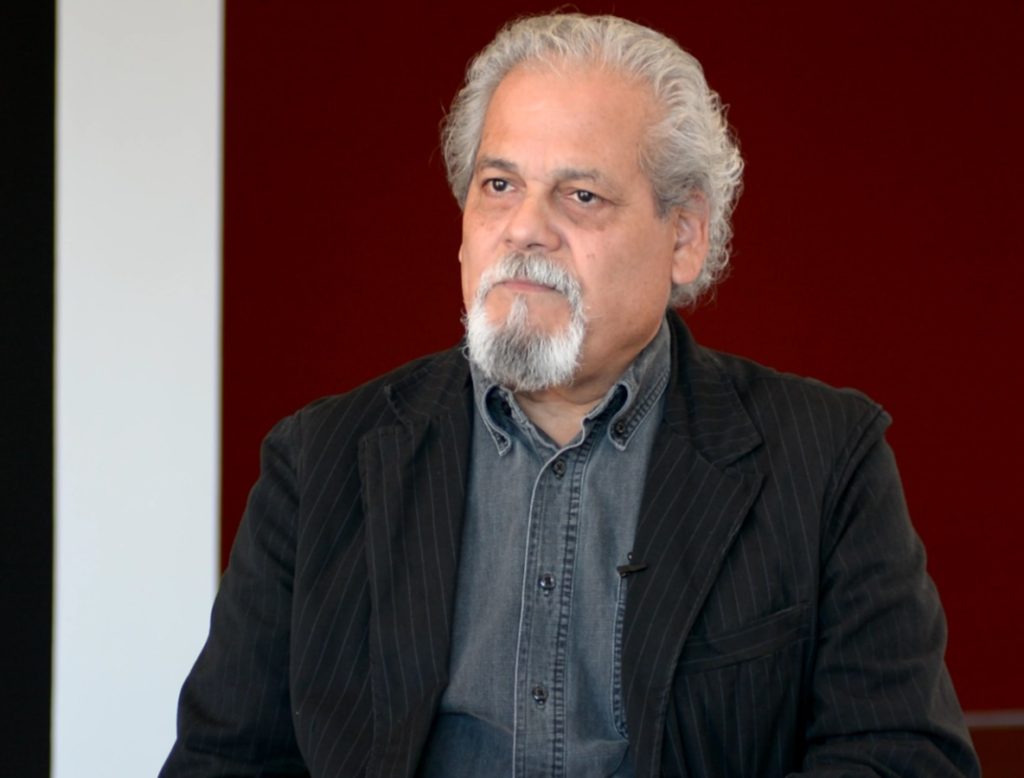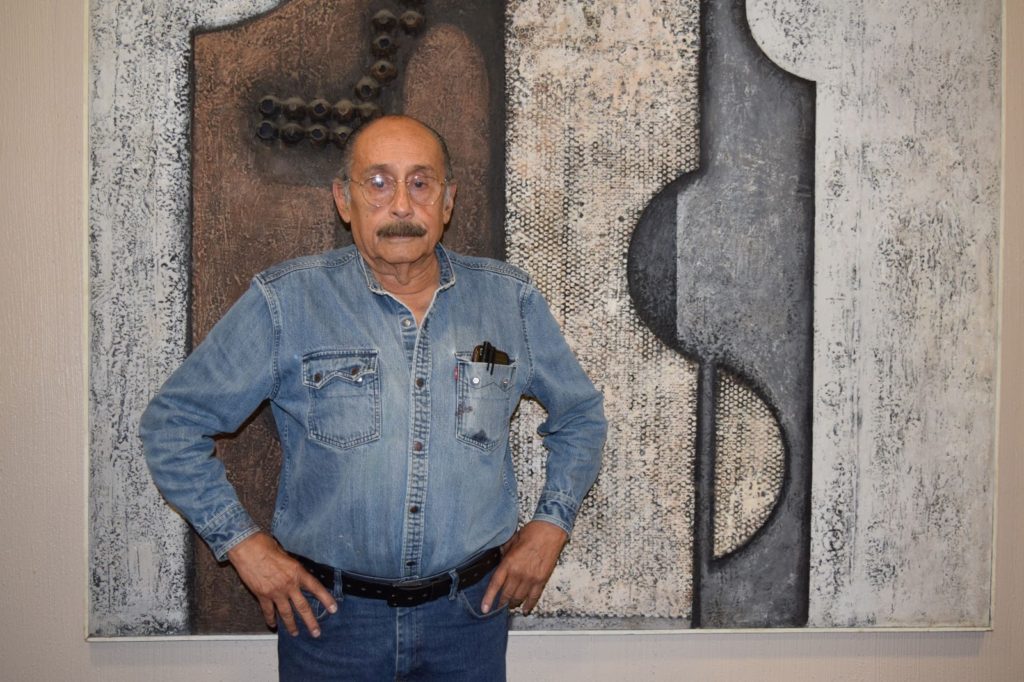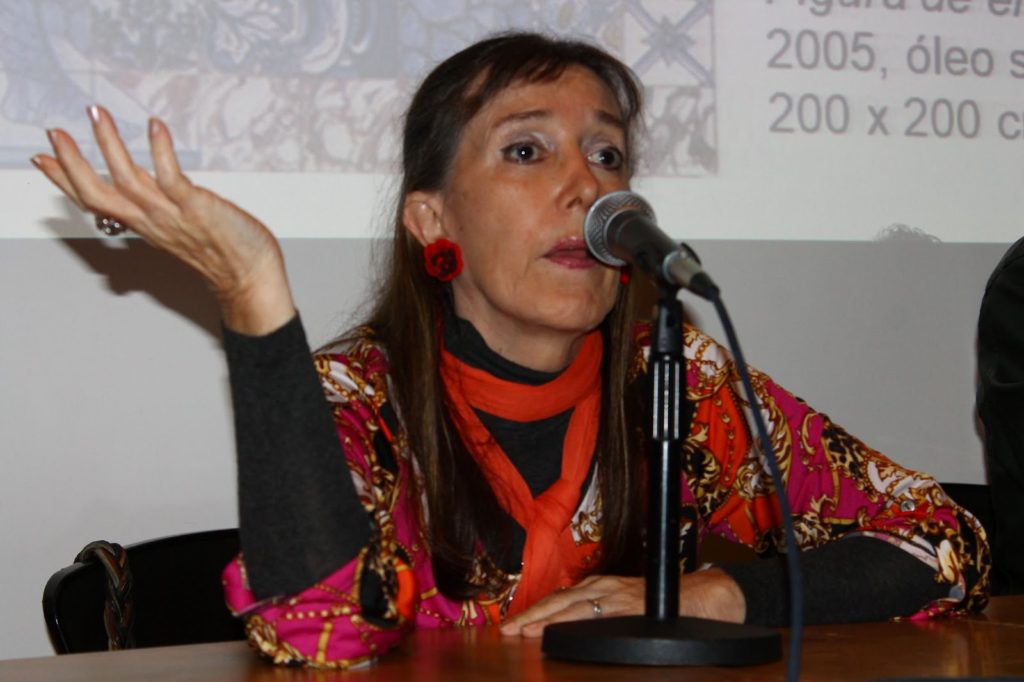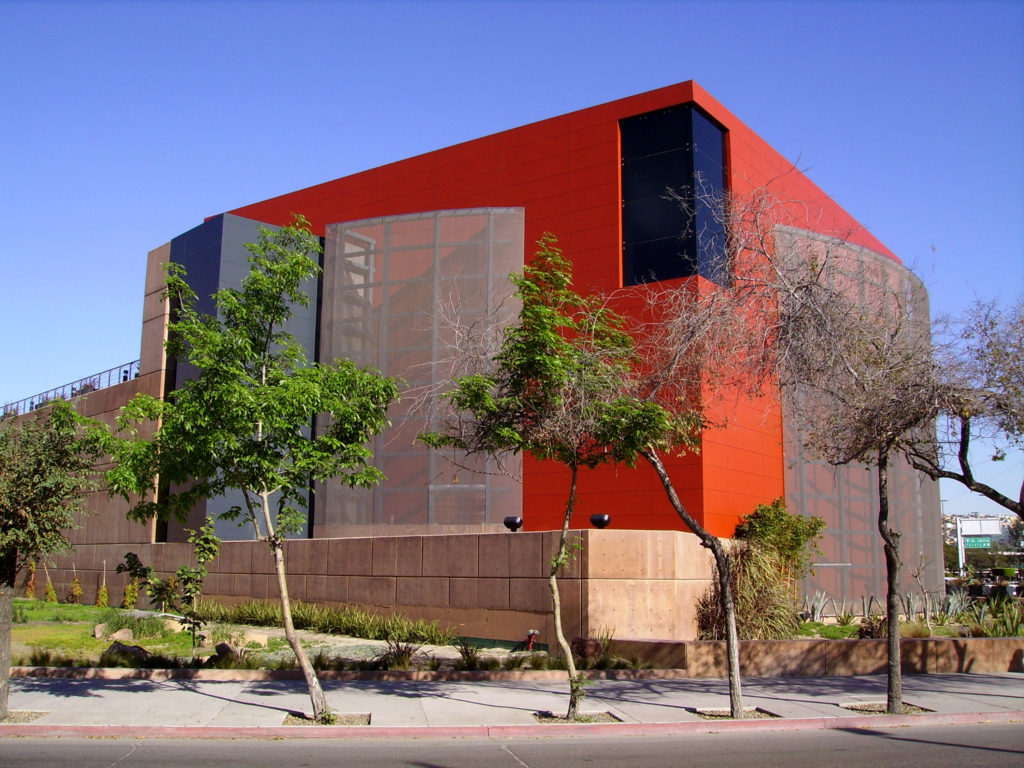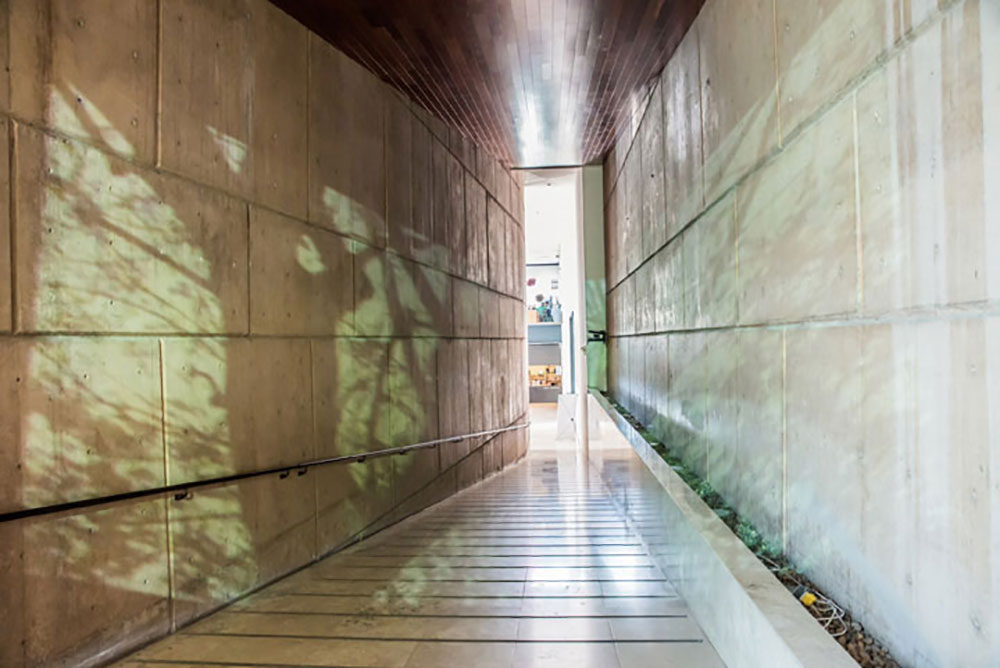Explorar el universo pictórico de Roberto Matta es ingresar en la aventura del verbo ver y de la palabra verdad, que el artista descompone en ver y dar. Lo que el individuo percibe en la acción de ver es una verdad relativa y parcial, porque culturalmente ha aprendido a ver de manera selectiva. Frente a esto, Matta propone una manera distinta de ver, en cuyo acto –ver la verdad– vaya implícito el conocimiento consciente del fenómeno, dicho con sus propias palabras: saber cómo se da ese ver, qué ocurre en el proceso mismo.
Para Matta, el arte es el medio que nos permite conocer mejor la realidad, pero no la realidad visual, aparente, sino también la realidad cultural manifestada en el ser psicológico social. Entre las muchas definiciones, encontramos que para él: “El arte es el deseo de lo que no existe, y a la vez la herramienta para realizar ese deseo”. [1] Aquello que no existe es un verdadero sentido de humanismo, concebido como el conocimiento integral del hombre, de la significación de la vida y su relación con el cosmos. Por eso, para Matta el acto de ver supera lo fisiológico para convertirse en un despertar de la conciencia, un ingresar en la psique individual y colectiva: es el viaje infinito hacia y desde el mundo interior y exterior. La verdad se encuentra en la zona desconocida del inconsciente, en lo más profundo de la mente humana. Por este motivo, el artista escudriña el caos dentro y fuera para que se pueda generar lo que él denominó, en 1968, la guerrilla interior, es decir, la necesaria e inminente revolución personal que, insertada en un plano mayor, provocará la revolución de la sociedad.
Su planteamiento estético sobrepasa lo puramente plástico para concretarse en una preocupación de orden moral, que se va definiendo a partir de sus primeros dibujos experimentales. El joven arquitecto, inconsciente, comienza a dibujar como una necesidad de conocerse a sí mismo y conocer al mundo. La expresión lineal: gráfica, analítica y sintética, se pone a disposición de representar formas abstractas, sugerentes y orgánicas, que impresionan a André Breton, en 1937, al punto de definirlo como muy surrealista, determinando su ingreso como miembro activo de ese grupo artístico e intelectual. El dibujo resulta entonces el punto de enlace entre la arquitectura y la pintura. La transición es la síntesis de una idea, de una situación: es la herramienta para comenzar a indagar en la psique. La línea y el color de estos primeros dibujos serán los elementos principales para consolidar un lenguaje pictórico. A lo largo de su trayectoria, el dibujo será siempre la vía para experimentar, y constituirá la fuente nutriente de su obra pictórica. Desde sus comienzos se percibe una preocupación que se tornará en constante: la expresión del interior de la mente humana, pues el humanismo se genera primero en el individuo y luego en la sociedad.
La psique individual y el paisaje cósmico.
La primeras pinturas de Matta, en 1938, denominadas Morfologías psicológicas, son una transcripción pictórica de sus planteamientos gráficos. Ya incorporado al Surrealismo, se interesa de manera consciente y constante por el mundo interior. Desde esta época el artista manifiesta su concepción de la vida como una sucesión de imágenes espacio–temporales. La vida es movimiento y Matta intenta expresar visualmente –de manera más real y concreta– los distintos estados de la conciencia y llevar a la tela una forma capaz de representar la génesis del pensamiento. Así, crea verdaderos paisajes mentales en los cuales se conjugan lo orgánico y lo inorgánico: grutas habitadas por membranas, mucosas, terminaciones nerviosas, arterias y músculos, entremezclados con rocas, guijarros y formas calcáreas variadas, entre los cuales circulan diversos fluidos. Todo ello interconectado por una luminosidad tenue, inmanente a los cuerpos y que se destaca sobre el fondo oscuro del ámbito total, otorgando unidad y sensación de intimidad a la composición. Estamos frente a las zonas más íntimas de nuestro pensamiento, en el recinto donde se procesan las imágenes recibidas por el cerebro cuando aún existe la totalidad de lo percibido, a modo de collage.
En ese intento de revelar las “relaciones invisibles entre los objetos”, Matta considera importante que una pintura contenga cuatro elementos básicos “…una piedra, una vegetación, un hombre y un objeto de su propia creación”. [2] Así representa la materia en todos sus estados: mineral, vegetal, animal y cultural, con la intención de relacionarlos todos para generar un continuum, una interconexión. A petición de André Breton, Matta elabora en 1938 una definición de la morfología psicológica: “Llamo morfología psicológica al gráfico de transformaciones en la absorción y emisión de energías dentro del objeto, desde su aspecto inicial hasta su forma final en el medio geodésico de la psicología”. [3] El objeto es potencialmente capaz de generar numerosas interpretaciones y el artista intenta plasmar el momento en que se produce el pasaje –el tránsito de un estado espiritual a otro–, esa transformación que no puede ser conscientizada por la mente humana. [4] Y aclara: “La imagen óptica es solo un corte teórico en la caída morfológica del objeto. La imagen es retenida para calmar la inquietud y no conservamos sino una de las formas posibles del objeto”. [5] Se trata entonces de representar imaginariamente el proceso de la percepción visual a través de la superposición de imágenes, expresando así la totalidad de la experiencia espacio-temporal.
La noción de continuumexplica la experiencia como la interacción entre el organismo y el medio, sin cortes, sin separaciones; por eso en la obra de Matta no se presenta el fenómeno figura–fondo, no hay un delante y un detrás, no hay entidades individuales sino una continuidad entre los cuerpos; un dinamismo constante de transparencias, líneas y espacios múltiples en recíprocas relaciones. El artista sabe que el individuo es incapaz de percibir conscientemente la multiplicidad y asume la tarea de enseñar a ver la realidad, el caso real.
El hombre no puede entender la experiencia múltiple de la percepción y hacerla consciente. ¿Cómo percibir la materia como energía ¿ ¿Cómo asimilar la relatividad y el dinamismo de las nuevas concepciones de la física? La realidad, en su naturaleza filológica, no puede ser totalmente percibida porque “…no parece que a la mente le sea directamente accesible un proceso de interacción”. [6] No se puede visualizar el funcionamiento real del pensamiento aunque teóricamente se comprenda el proceso. Nuestro ojo se centra en una imagen y destaca la unidad en la pluralidad.
Pero, contrariamente a lo que vemos, sabemos que lo estático y eterno ha sido reemplazado por lo dinámico y relativo. Frente a este hecho, Matta sufre la angustia del individuo que no puede asir la realidad, porque está lejos de la compresión humana e intentar tratar de expresarla a través de la experiencia pictórica. La concepción del universo como continuum, del espacio físico como principio no-homogéneo, son construcciones matemáticas, abstractas, que no tienen formas posibles de ser comprendidas, de ahí que el artista invente imágenes –campos gravitacionales lineales, por ejemplo– para enseñarnos a ver la cuarta dimensión. Matta desarrolla la simultaneidad visual: “La percepción del crecimiento y accidentes del objeto realizados simultáneamente permitirá sentir la biología psicológica del objeto”. [7] Ir más allá de la realidad establecida por nuestra limitada percepción visual y explorar las profundidades de la psique, que es el lugar donde se transforma la realidad.
Para representar lo relativo y lo dinámico, el artista recurre a formas energéticas sin límites definidos, palpitantes en su luminosidad, volumétricas frente al paisaje oscuro de la cavidad del inconsciente. La profundidad está dada por una perspectiva atmosférica, creada por la aplicación de capas sucesivas de pintura muy diluida. Según Gordon Onslow Ford, para esa época Matta había descubierto los aspectos femenino y masculino de la psique: energías vitales generadoras de vida cósmica, que sugieren vulvas redondeadas y formas erectas de carácter fálico. En alguna obras aparece la unión de ambos aspectos como la génesis de un mundo más completo, más espiritual: lo voluptuoso, cálido y luminoso enfrentado a lo ascendente, agresivo, frío y oscuro; esencia de la vida orgánica y psíquica. Existe una relación con la alquimia, que concibe los orígenes de la naturaleza como la interacción de polaridades duales: el cielo y la tierra, lo femenino y lo masculino, que se podrá apreciar mejor en los países de Matta de los años cuarenta.
El paisaje cataclísmico.
Durante sus primeros años de estadía en Nueva York, 1939-41, desarrolla los inscapes o paisajes psicológicos, hasta cristalizar en lo que sería la plataforma de su vocabulario pictórico. La composición se torna compleja por las relaciones cada vez más dinámicas entre los elementos y, esencialmente, porque se amplía el campo visual: el espacio comienza a expandirse en múltiples perspectivas que se superponen desde una visión a vuelo de pájaro, enfatizando al mismo tiempo la profundidad del mundo psíquico. Los paisajes interiores son reemplazados por paisajes cósmicos, pero se mantiene una ambivalencia entre lo exterior y lo interior. Se acentúa el gesto, la mancha, la transparencia y se hace notar la actuación cada vez más participativa de la línea generadora de energía y movimiento a través de ondas. Hay un mayor desarrollo del frotagge para crear más luminosidad e indefinición de las formas, enfatizando la interacción entre los elementos. La abstracción se pone de manifiesto en imágenes genéricas, de gran amplitud sígnica, para representar las formas cosmológicas que aluden al origen y a las características del mundo físico. El volumen se condensa en los soles o centros de energía. Domina la síntesis, a pesar de la introducción de mayor cantidad de elementos: intersecciones lineales y de planos corpóreos y virtuales, que destacan la simultaneidad en una cohesión de colorido fulgurante y dinamismo compositivo. En grandes telas aparecen los torbellinos y los volcanes como generadores de vida, simbolizando la dualidad de lo fértil y lo destructor de la fuerza vital, expresado en lo femenino y lo masculino a través del color y las formas de los flujos volcánicos; existe pues una energía que asciende y se libera, y otra que está dentro y que actúa bajo la tierra. El volcán simboliza psicológicamente las pasiones básicas, capaces de ser orientadas para cristalizar en la energía espiritual.
Para Matta, en sus primeros dibujos y pinturas había algo así como “…el embrión de algo que quería nacer”. [8] Es la aventura inicial de introspección del individuo al inconsciente, al conocimiento de las fuerzas vitales que rigen nuestro pensamiento. El primer paso en este viaje es el cataclismo, la erupción, la revisión de todo lo conocido para desentrañar la verdad: el origen de lo nuevo es el cisma. Estos paisajes llaman la atención de algunos jóvenes artistas neoyorquinos (Robert Motherwell, Arshile Gorky, William Baziotes, Mark Rothko y Jackson Pollock, entre otros), porque presentan fondos automáticos, realizados por medio de la aplicación espontánea de la pintura, resultando manchas adecuadas para expresar la mayor subjetividad. La coincidencia entre lo que Matta experimenta en este período y lo que buscan expresar los neoyorquinos, coloca al artista como un verdadero guía y promotor del expresionismo abstracto, aunque los fines estéticos sean distintos. Para Matta, la mancha casual es el origen de revelación de una expresión definida y racional: “Si todo el rumor contiene desde ya un sentido, el automatismo es el método para desentrañar el orden de cada situación de desorden, y no creación de desorden, (mi conflicto con el expresionismo abstracto). Se desarregla el sentido, pero siempre para tener sentido”. [9] En 1942, desarrolla un nuevo concepto del espacio, en parte por influencia de algunas obras de Marcel Duchamp, así como por la incorporación de la idea de los Grandes Transparentes, planteada por Breton en la publicación de Prolegómenos, considerada como el Tercer Manifiesto Surrealista. El caos orgánico del magma original, que amplía la noción duchampiana de passage, se representa visualmente en un espacio múltiple, creado por una estructura lineal compuesta de planos fragmentados en numerosas perspectivas. Esta irrupción de energías y planos es la alusión al individuo y sus distintos estados de conciencia: se emplean los recursos de la perspectiva lineal, de orden racional, para representar el espacio interior, irracional. Se mantienen los centros de energía: soles opalescentes que remiten a la piedra filosofal y que simbolizan lo embrionario. El individuo nuevo que proclama Breton aparece simbolizado en elementos antropomórficos, flotantes y aislados, como huesos y vértebras. La idea de una vitrificación del ser influirá en la posterior creación de su primer personaje mítico: el vitreur (vidreador).
Siguiendo aún el concepto de passage, sustituye poco a poco la necesidad de indagar en los orígenes cósmicos para profundizar en las relaciones del individuo con el entorno social y expresar los distintos estados de existencia. Para ello incorpora líneas de fuerza así como pantallas perpendiculares, transparentes y opacas, que encierran distintas situaciones y que se interconectan a través de líneas. Se simbolizan así los obstáculos de los cuales debe desprenderse el individuo para comprometerse con el mundo: luego de responsabilizarse de sí mismo debe responsabilizarse con el exterior. Estas trampas creadas con líneas de tensión y planos que se fragmentan, son las contradicciones de la realidad psíquica.
El vértigo de Eros, de 1944, marca el momento en que el artista expresa su propia relación con el mundo social. Su código plástico, establecido básicamente por planos, ondas y nódulos embrionarios, lo emplea para manifestar un espacio infinito, sin horizontes. El vértigo podría definirse como el sentimiento de abandono –consciente o inconsciente– de todos los esquemas establecidos. Es el estar solo frente a la elección de ser; es la toma de conciencia de la autodecisión. El vértigo es carecer de pautas que obstaculicen la visión. Para llegar a esta situación. Para llegar a esta situación se debe haber observado la realidad desde diferentes perspectivas, pero sobre todo, vivir al mismo tiempo dentro y fuera en una misma situación. El vértigo es el punto de apoyo verdadero –el no apoyo–, la realidad más segura: la libertad. El vértigo de Eros es la metáfora visual de la bóveda celeste y también el espacio de las emociones: profundo y oscuro, donde flotan las imágenes simbólicas de la energía. En esta iconografía del inconsciente, Matta llega a la culminación de sus primeras búsquedas.
Hacia la creación del hombre cósmico.
La necesidad de conocerse a sí mismo era la fase necesaria para establecer la relación con el mundo externo y asumir una nueva etapa: la representación del pensamiento colectivo –la psique como ente social–, por lo cual debe asumir un lenguaje plástico más figurativo, menos abstracto.
Entre 1945 y 1947, época de crisis existencial del artista, Matta incorpora a la pintura las figuras humanas que ha desarrollado a través de sus dibujos. Aparecen los héroes: el vidreador, el peregrino de la duda, el electricista, el ciego, entre otros. El vidreador es el portador de diversos lentes transparentes que muestran la realidad, aunque de manera fragmentada. Es el mediador: el propio artista que ha asumido esa tarea luego de tomar consciencia –y posición– frente a la realidad para mostrar la verdadera visión del mundo a través de su propia autoconciencia, y los vidrios (sus herramientas) dejan ver lo que hay más allá. En general, los porcentajes fantásticos de estas pinturas se insertan en situaciones dramáticas, con sus rostros-máscaras que los hacen fluctuar entre totems y robots. No hay un tiempo definido ni particularidades porque se alude al hombre universal. Seres enredados entre numerosos filamentos –seres en situación– y en posiciones desgarradoras, muchas veces aislados de los demás. Inspirándose en las formas de arte primitivo de América y Oceanía, Matta aplica aquí la noción de tótem para representar al individuo hierático, simbólicamente atado a sus propios esquemas. Se representa lo inamovible envuelto en líneas energéticas porque es el hombre encerrado en sus propias trampas, incapaz de relacionarse con el resto de la humanidad. Es el ser en acción y –contradictoriamente– estático, que habita un espacio estructuralmente convulsionado. El artista ha transgredido el orden establecido porque ha perdido la fe frente a la tecnología. La guerra representa el fracaso de la ciencia en cuanto se ha llegado a la utilización de la razón en contra del hombre mismo, y el costo humano no justifica esa irreflexión y optimismo desmesurado en los avances científicos. En su obra Étre avec, de 1945, por ejemplo, los seres torturados no pueden relacionarse entre ellos. Se expresa así la imposibilidad de compartir, de ser social, de sobrepasar el excesivo individualismo que caracteriza al hombre contemporáneo. Matta desarrolla una visión del espacio más compleja aún: numerosos ámbitos forman un gran laboratorio. Es la visión del maquinista del ser humano, el interior de una suerte de fábrica donde se desarrollan simultáneamente distintas situaciones. Los individuos, frente a sus tableros de control, realizan sus labores independientemente de los demás. Es una gran composición intrincada de trampas individuales que encierran al ser colectivo: el espacio celular de sus primeras pinturas ha sido reemplazado por el espacio molecular. Este proceso ha ido revelando la realidad desde lo simple hasta lo complejo, desde el conocimiento del individuo hasta el de la sociedad. Breton señala al respecto: “Para expresar el desgarramiento del mundo, él debe haber conocido todo el desgarramiento en los límites de sí mismo”. [10] Todo un proceso psicoanalítico propio para llegar a descubrir a la consciencia humana y sus posibilidades de elección.
Para mostrar la totalidad de las situaciones a que está expuesto el individuo, en 1947 crea el concepto de cubo abierto y proyecta las dimensiones psicológicas simultáneas: lo superior, lo inferior, lo anterior, lo posterior y lo lateral de una situación. Las ataduras son sustituidas por las energías envolventes de sutiles atmósferas luminosas. El individuo debe conocer las posibilidades de existencia a las que está expuesto para poder elegir; por lo tanto, se sugieren los obstáculos que simbolizan las reglas establecidas culturalmente para despertar la consciencia, primero individual y luego colectiva.
Entre 1950 y 1954, se inspira en una iconografía universal de torturas y sacrificios humanos para representar los conflictos sociales contemporáneos. Los personajes habitan un escenario teatral en actitudes rígidas, a modo de ejércitos autómatas, robotizados, que nos recuerdan las figuras de la ciencia ficción, como en la obra Les Roses sont belles, de 1951, que se refiere al juicio de los Rosenberg.
Desde los años cincuenta, Matta desarrolla la misma temática con leves alteraciones estilísticas. Por ejemplo, el engrosamiento de la línea, el espacio menos profundo debido a las capas pictóricas más espesas y la mancha más evidente. Permanece la musicalidad atonal de los ritmos así como las fosforescencias de los centros de energía y la simultaneidad espacial, para expresar el comportamiento psíquico del individuo en su relación con el cosmos.
Su constante preocupación estética consiste en la realización de una constelación de las situaciones simultáneas –que se intersectan por ejes y planos– para que se conjuguen los distintos estados del ser y se produzca una verdadera participación social, una vida plena. La participación del individuo debe asumir un ritmo constante de contracción-dilatación, a modo de las arterias del corazón, para que en un movimiento de introspección el hombre se conozca a sí mismo y en un segundo movimiento de extraversión, pueda conocer el mundo exterior. En la pintura, las fases de este ritmo se manifiestan en las formas aglutinadas que reúnen las situaciones y luego, la forma explosiva que expande. El movimiento que entra y sale; el paso entre el interior y el exterior: es el deseo, la energía vital, Eros; como diría Matta, las ganas. El espacio en pulsación obliga a que la vista recorra la superficie de la tela sin obtener un punto de apoyo para crear una especie de shock en el ojo del espectador.
El espacio es el tema central de la obra de Matta. El espacio como forma y contenido. Es el espacio pictórico, el espacio físico y el espacio psicológico. Es el lugar donde ocurren los fenómenos: es el espacio insondable de la condición de ser humano.
El artista intenta, entre lo ambiguo y lo absoluto, aprehender la esencia de la realidad para presentarla al espectador. Su indagación en las zonas del inconsciente revela que la verdad se encuentra en el interior de cada hombre. Es allí donde reside la energía vital: Dios. Para él: “Todo individuo es un nudo central de lo eterno…”. [11] Su realidad es de orden metafísico, sobrepasando lo fenomenológico y por eso la vida es esa energía que fluye a través de los seres humanos.
En la pintura de Matta se exalta el dinamismo de la realidad contemporánea para crear un shock visual, es decir, el deseo de establecer un lapso para detenerse a ver, que se podría relacionar con el planteamiento de Gillo Dorfles respecto a la necesidad del hombre contemporáneo de recuperar la capacidad o consciencia diastemática. [12] El ver de Matta es una acción que sobrepasa lo fisiológico para convertirse en el deseo de recuperar el equilibrio vital de la mente para provocar el espacio de reflexión. A través de su pintura intenta develar la realidad –o surrealidad– que guía nuestros destinos. Revelar los males que sufre la sociedad actual, manifestados básicamente en el excesivo individualismo que fomenta la ambición de poder y que a su vez impide el verdadero desarrollo integral del hombre. Destaca la falta de humanidad, entendida como la relación original (inconsciente) con la naturaleza, que se ha perdido por la excesiva confianza en el conocimiento científico. Se ha creado una escisión en la armonía vital y ha desaparecido la fe en los ordenadores del cosmos. Psicológicamente, podría decirse que se ha perdido la relación con la energía primaria de los instintos, la energía psíquica como totalidad.
A lo largo de la historia, el mito ha sustituido esa orfandad del hombre frente al mundo, pero en la actualidad existen nuevos mitos, que por su titanismo y desmesura (manifestados iconográficamente, por ejemplo, en Le Prophéteur, de 1954), ya no satisfacen las verdaderas necesidades espirituales del individuo. Carl Jung señaló “Nuestra vida actual está dominada por la diosa Razón, que es nuestra mayor y más trágica ilusión. Con ayuda de la razón, así nos lo creemos, hemos conquistado a la naturaleza”. [13] La razón como exceso, como el mito que impide ver las dimensiones espirituales que ha permanecido por siglos en nuestro inconsciente sin volver a formar parte de una totalidad. Se ha perdido la fe en lo sagrado, en el alma. Para curar este mal esencial se debe comenzar por la psique. “Como todo cambio tiene que comenzar en alguna parte, es el individuo aisladamente, el que lo experimentará y lo llevará a cabo”. [14] El hombre debe recuperar su relación con la naturaleza tomando consciencia de sí mismo a través del proceso de individuación, cuyo objetivo es “…la realización de una unicidad del hombre individual…”. [15] El sí mismo es ese centro –para los alquimistas es la piedra filosofal– que rige la psique y que guía a la consciencia en sus cambios y crecimientos, pero “…este aspecto creativamente activo del núcleo activo puede entrar en juego sólo cuando el ego se desentiende de toda finalidad intencionada y voluntaria y trata de alcanzar una forma de existencia más profunda y más básica”. [16] Estamos frente al vértigo de Matta, frente a la participación activa de las energías psíquicas. “Mientras más conciencia, más luz. Mientras más luz, más conciencia”. [17]
Esta obra supera entonces lo puramente pictórico, ya que se despliega a través de la gráfica, de la poesía, de la caricatura, de lo murales y de una actitud ante la vida; es una obra completa, consecuente consigo misma y sólidamente sustentada sobre las bases del compromiso y del riesgo de ser verdaderamente humanista en el estricto sentido del término. Matta es un verdadero hijo de las vanguardias heroicas, optimistas en la participación activa y revolucionaria del arte frente a la sociedad. Valdría la pena que, en un futuro no muy lejano, se revise su actuación en el Surrealismo y se le otorgue el justo valor a su obra en el desarrollo del arte latinoamericano, y uno de los mayores del mundo. Ha sido un navegante de dos mares, un hombre de dos mundos, un receptor ávido de los beneficios de ese surrealismo europeo que entró a saco en el reino de la libertad (…) La revolución, la guerrilla interior y exterior, el Vietnam, este mundo progresivamente situado en la cresta de conflictos cruentos que de ninguna manera podemos marginar, llevaron a Matta a una nueva pintura que es su gran proeza, su ópera magna: un lenguaje poético surrealista basado en una concepción política profundamente humanística como para afirmar que el mal es un hombre que humilla a otro hombre (no importa en qué partido, ni facción, ni célula esté afiliado el mal)”. [18]
Viaje desde el yo interior hacia el exterior, pasando por el autoconocimiento biológico, psicológico y fenomenológico para llegar a aprehender el mundo: su comportamiento y luego las relaciones sociales –para terminar adoptando una posición crítica, cuestionadora y moralizante de un yo enriquecido frente a una sociedad cada vez más deshumanizada y que fluctúa entre la irreflexión compulsiva y la autoconciencia. Matta evidencia en su obra la ansiedad cultural que aflige a nuestra sociedad contemporánea.
Para Rafael López-Pedraza, “…la psique occidental siempre ha vivido en la ansiedad provocada por el conflicto constante entre las mitologías paganas –los numerosos dioses con sus imágenes diferenciadas– y el Dios único y carente de imagen del monoteísmo”. [19] Este pensamiento dual, asentado en las raíces de nuestra cultura, crea un conflicto esencial entre una manera única de ver la vida y una manera diversificada, que es el origen mismo de nuestra sociedad desde hace cientos de años. Es un conflicto que se origina en la psique misma, individual y luego colectiva. Y plantea: “El cambio desde el punto de vista del Yo hacia una consciencia que abarque tanto el monoteísmo como el politeísmo es, para mi, de importancia primordial. Y ese cambio de punto de vista sólo se alcanza mediante un caer en cuenta”. [20] Este caer en cuenta se parece al ver de Matta, a esa necesidad de romper con los esquemas establecidos culturalmente y reflexionar en nuestro pensamiento, no sólo psicológico sino también histórico. El proceso tiene señalado el camino: viajar hacia lo individual para volver hacia lo colectivo, de algún modo, tal como lo experimentó Matta de manera personal y a través del desarrollo evolutivo de su pintura. |
* Texto perteneciente al catálogo de la exposición Matta Universo 11 11 11, Museo de Bellas Artes, Caracas, marzo-mayo, 1992.
[1] Roberto Matta: “La guerrilla interior”, Congreso de Cultura, La Habana, 1968, citado en Matta/Homenaje a Jorge Zalamea, Museo de Bellas Artes, Caracas, septiembre de 1975, s.p.
[2] Gordon Onslow Ford: “Notes sur Matta et la peinture (1937-1941) “, Matta, Centre Georges Pompidou-Musée National d’Art Moderne, Paris, 1985, p.29.
[3] Roberto Matta, citado por Gordon Onslow Ford , op.cit, p. 30.
[4] Matta se apoya en el concepto de passage de Marcel Duchamp que recoge G. Buffet en un artículo en 1936.
[5] Roberto Matta, citado por Gordon Onslow Ford , op.cit, p. 30.
[6] Rudolf Arheim: El pensamiento visual, Ediciones Paidós Ibérica, Barcelona, 1986, p. 295.
[7] Roberto Matta, citado por Gordon Onslow Ford , op.cit, p. 31.
[8] Roberto Matta, citado por Eduardo Carrasco en: Matta-Conversaciones. Ediciones Chile y América, Santiago, 1987, p. 59.
[9] Roberto Matta, citado por Jean-Phillippe Domecqu: “Ni peintre ni poète ni philosophe ni Matta” , Matta, Centre Georges Pompidou-Musée national d’art moderne, Paris, 1985, p. 77.
[10] André Breton: “Il y a trois ans…”, 9-10 juillet 1947, Extrait de Le Surréalisme et la Peinture en Matta-Catalogue raisonné de l’oeuvre gravé (1943-1974), Editions Sonet-Visat, París, 1975, p. 8.
[11] Roberto Matta, citado por Jean-Phillipe Domecq, op. cit., p. 72.
[12] Gillo Dorfles: El intervalo perdido, Editorial Lumen, Barcelona, 1984.
[13] Carl G. Jung : “Acercamientos al inconsciente”, El hombre y sus símbolos, Aguilar, Madrid, 2ª edición, 1974, p.101.
[14] Ibíd.
[15] M. L. von Franz: “El proceso de individuación”, El hombre y sus símbolos, Aguilar, Madrid, 2ª edición, 1974, p.162.
[16] Ibíd.
[17] Roberto Matta, “La guerrilla interior”, op.cit., s.p.
[18] Marta Traba: “Matta-Marta Traba/ Cartas cruzadas”, Homenaje a Jorge Zalamea, Museo de Bellas Artes, Caracas, septiembre de 1975, s.p.
[19] Rafael López-Pedraza: Ansiedad cultural, Colección Psicología de los Arquetipos y Estudios Jungianos, Psicología Arquetipal S.R.L., Caracas, 1987, p. 39.
[20] Ibíd., p. 40. |






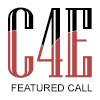 Promote your event. Get a listing in callforentries.com today.
Promote your event. Get a listing in callforentries.com today.

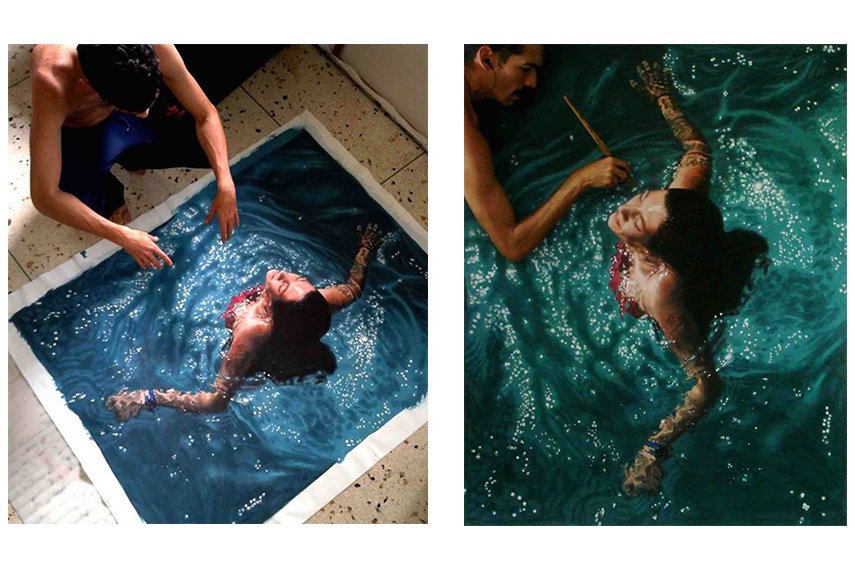
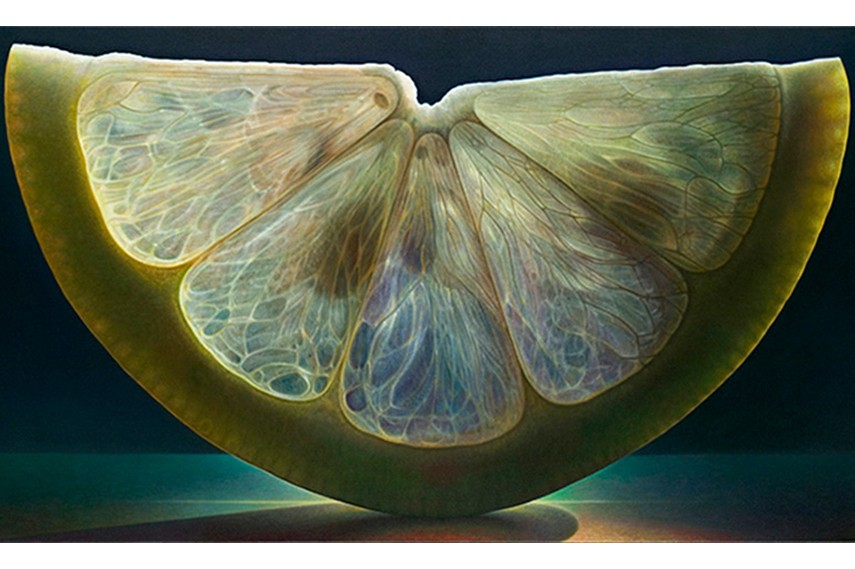
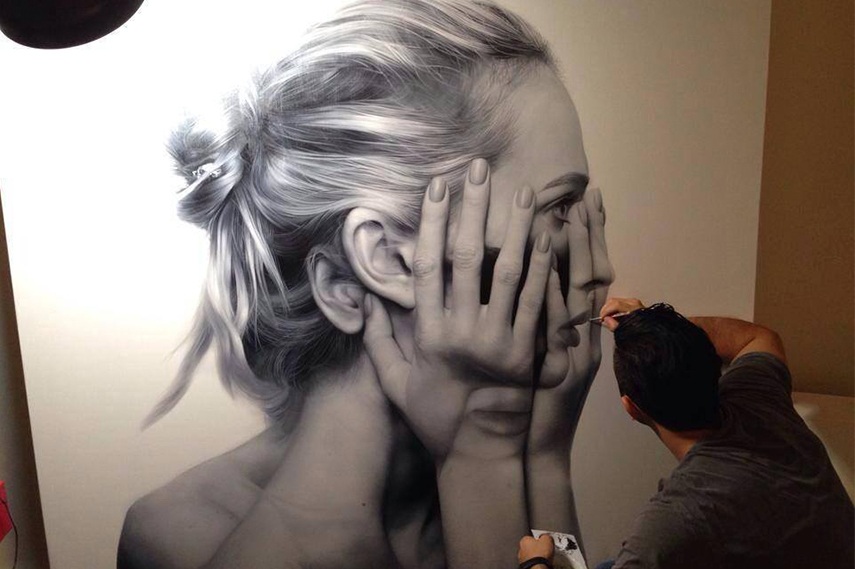
 Editors’ Tip: Exactitude: Hyperrealist Art Today
Editors’ Tip: Exactitude: Hyperrealist Art Today
